Limestone Caves and Forest Trails in Tenkawa, Japan
Tenkawa Village is hidden in the crevasses of mountainous terrain, densely covered in forest and teaming with glorious plants and animals. Japanese tourists have kept tight-lipped about this popular holiday destination for decades, packing out the camp grounds during summer and retreating to traditional lodges come snow fall. On weekends and public holidays, nature-lovers come to play in the fresh air and sip from the sparkling fresh Dorogawa Springs.
Despite only a 2-hour drive south of famous Nara City, Tenkawa is largely unknown to foreign travellers. Magnificent to visit all year round, the quiet town’s colourful roof tops can be admired from one of the spectacular aerial viewing platforms. During summer, the sun falls to create unique patterns over the town. In winter, the snow creates an enchanting atmosphere, looking like the set of a Hollywood Christmas movie.
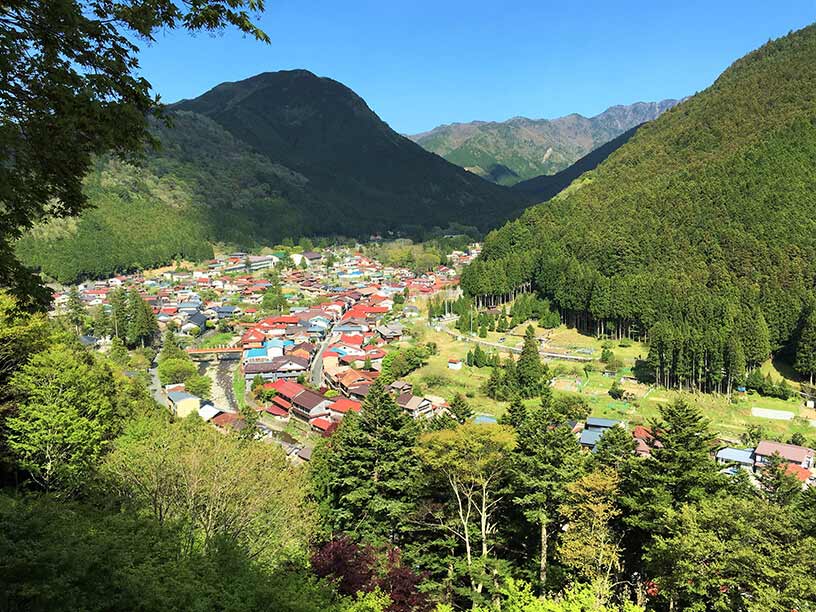
If you want to escape the hustle and bustle of Japan’s major cities, I can assure you, you will find calm and serenity even in the streets of the local village. The aging population of shop owners sweep the streets with home-made brooms and chat to by-passers as through time and money is irrelevant. Similarly, the crowded pine mountains remain unspoilt and relatively uncharted, greatly serving those who enjoy working up a sweat from steep inclines and untended terrain. With several trails to choose from, you can be walking for an hour before seeing another person. However, the absence of people invites plenty of spiders to take over, forming giant webs across pathways. I suggest charging through the cobwebs and not paying too much attention to the creepy crawly sensation you’ll have for the rest of the day, for you’re likely to stumble upon small clearings and gain a golden view over the village. Make sure you wear enclosed footwear and keep one eye on the ground for hazardous tree roots.
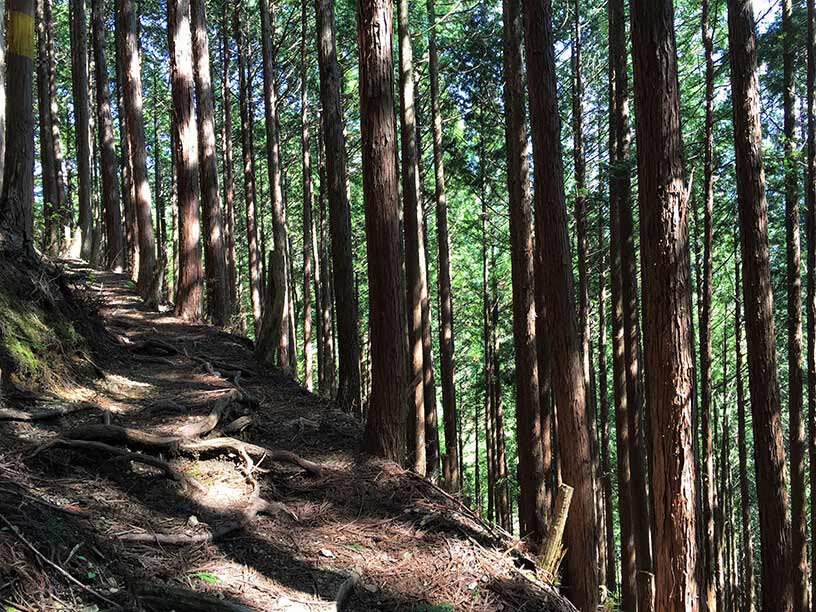
You can still experience the amazing wilderness during the cooler/wetter months, for there are motorised rail-carts operating up and down the mountains. For a small fee, the ‘ride’ will carry you up hill to the open-air observatories and to the entrances into public limestone caves. The two caves are roughly 1.5km apart, but are similar in size and character. To gain entry, you’ll have to pay approximately 500 yen and wear a white safety helmet. Once inside, take as much time as you like touring around the damp cave by foot; it’s softly lit with coloured lighting, creating a dramatic, mystical vibe. Even if you can walk the distance to the caves, I recommend taking the opportunity to wind through the forest by cart to gain a different perspective of the natural surrounds; they have you sitting a metre or two higher than the heads of hikers, showcasing small animals perched on low lying branches.
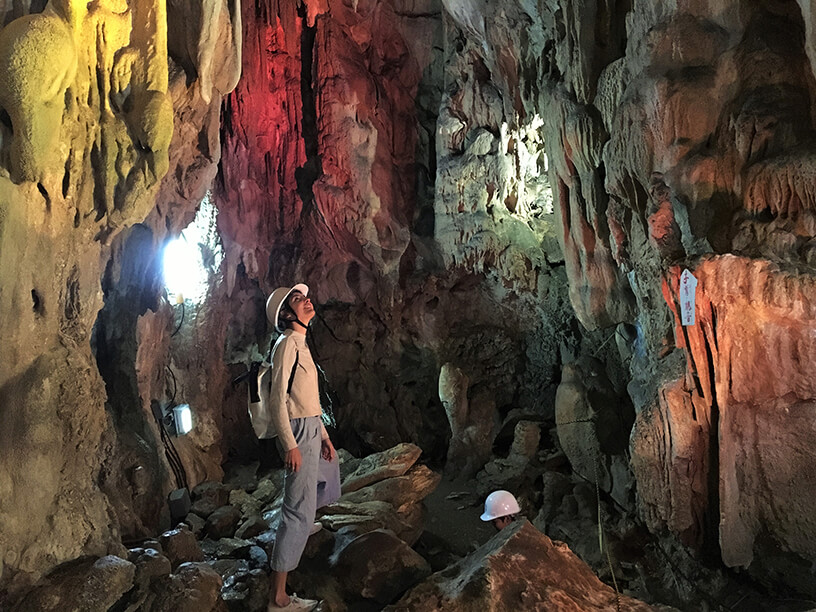
If you only ride one motorised cart up the mountain, in spring/summer I recommend taking the one that leads to Goyomatsu Shonyudo (Goyomatsu cave). It consists of four singular padded seats and no restraints. It’s slightly nerve racking descending backwards down the mountain, as you’re sat at a 45-degree angle and completely exposed to the elements. Contrarily, during snow season, opt for the rail carts leading to Menfudo Shonyudo. They are more family-friendly, seating large groups in an enclosed cart resembling a giant log.
Off to the side of the Menfudo caves is a path that extends in several directions. One of which leads to a suspension bridge over-hanging a flowing river bed. As you walk across, you can watch the sparkling fresh spring water cascade below. During autumn, you can even see people hand catching fish in the nearby streams. Once you’ve reached the other side, I recommend double backing and descending from the side you entered from; the other hill’s trail leads to a dead area of town. There’s a small Buddhist temple situated at the foot of the mountain which is well worth a visit, even just to admire the traditional gardens.
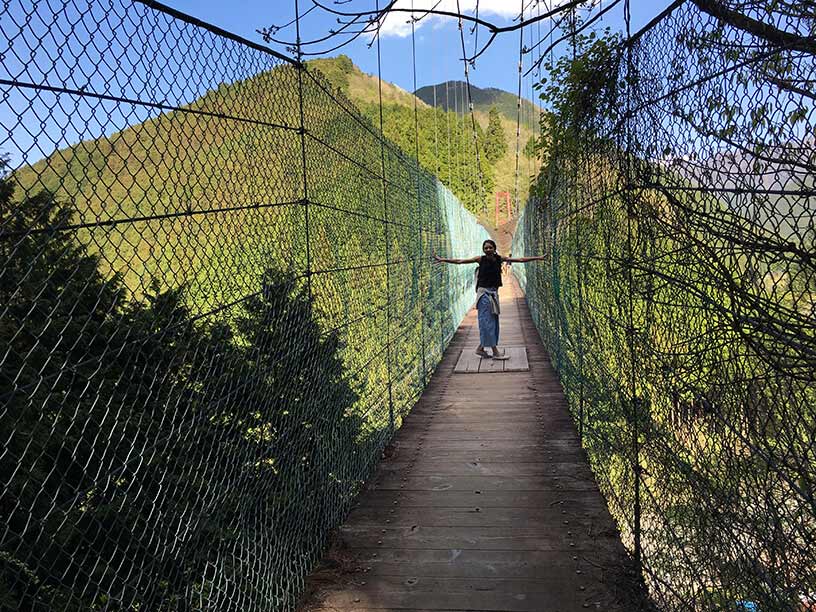
There’s a fish farm a short walking distance (about 500m) uphill from the temple’s carpark—just follow the made road. For a small fee you can roll up your pant legs and try wrestle a fish into your bare hands. If you’re skilful enough to catch one, you can pay to have it cooked up on an open fire. During off-season, you’re likely to see keen fishermen attempting to snag a morsel for their lunch. Take the opportunity to engage with them and they may even lend you a rod!
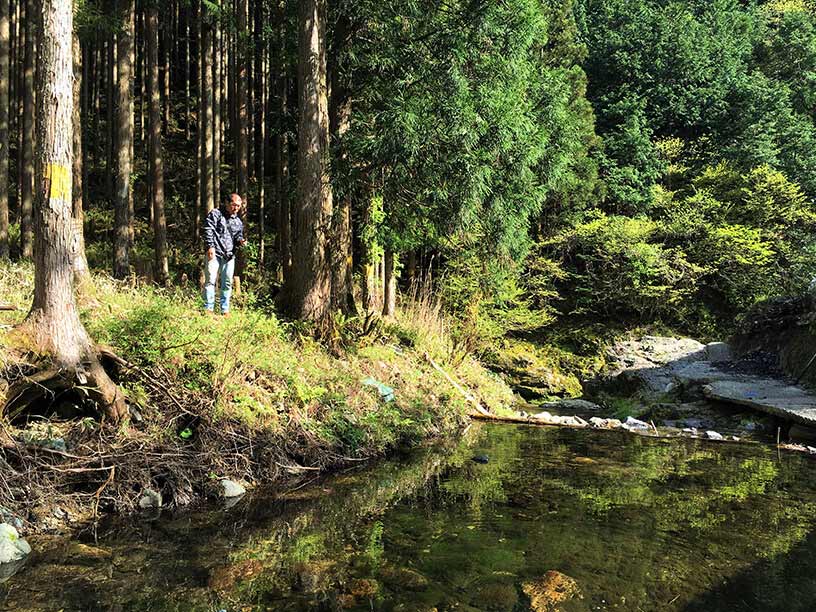
How to reach Tenkawa: From Kintetsu Nara station, take the Kintetsu-Kyoto Line (bound for Kyoto) to Yamato-Sadaiji Station. Change to the Kintetsu-Yoshino Line (bound for Kashiharajingu-Mae) and get off at Shimoichiguchi Station (approx. 1 hour). Take Nara Kotsu Bus No. 2 or 7 from Shimoichiguchi Station to Tenkawa.
Top Tips
- Rent a car: You can get to Tenkawa by train, however, I highly recommend hiring a car; it’s often difficult to find English speakers and the trains only run a few times per day in rural areas.
- Stay in Asuka: Due to limited accommodation facilities, staying in the heart of Tenkawa Village is rather pricey (around 10,000 yen per night). If you’re on a budget or travelling solo, I recommend staying in Asuka. A reasonable one-hour drive away, Asuka Guesthouse has dormitory style accommodation costing roughly 40,000 yen per night.
- Eat local: Visit the temporary stores situated across the road from the temple’s carpark in Tenkawa. During summer you can buy day-old wild honey or tinned boar meat.
Casey Hawkins grew up immersed in Australia’s sea, sun and surf culture. She first became a teacher because she was passionate about sharing ideas and experiences. Teaching has led her to explore some unique, remote locations and make friends with people from all walks of life. She is most passionate about learning and sharing their stories with others. Website: Nan’s Lucky Duck (hyperlink www.nansluckyduck.com.au)
The views, opinions and positions expressed by the author and those providing comments are theirs alone, and are meant as travel inspiration only. They do not reflect the opinions of Cover-More Insurance. You should always read the PDS available from your travel insurance provider to understand the limits, exclusions and conditions of your policy and to ensure any activities you undertake are covered by your policy.
Planning a trip?
Discover Our COVID-19 Cover
To find out what our current* benefits do – and don’t – cover, please read:
Plus, for helpful destination-based COVID-19 information, don't forget to check the COVID-19 Travel Risk Tool before and during travel.
*The cover information contained on the above pages refers to Cover-More policies sold on or after 26 June 2023. For cover information on policies sold prior to this date, please read the relevant PDS.